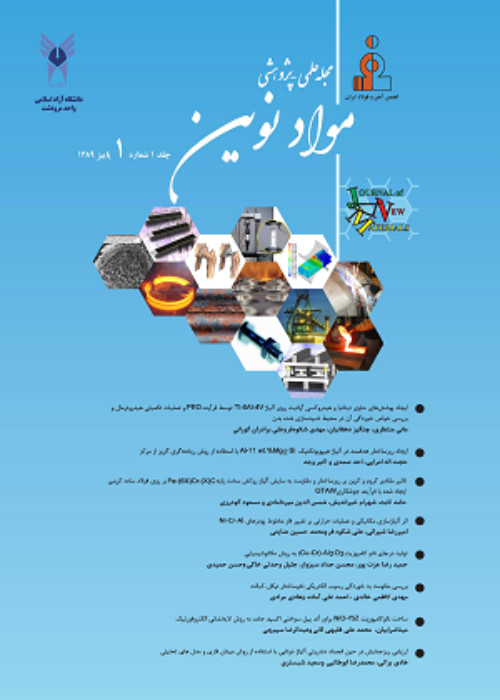Electrochemical deposition of calcium phosphate coating on the Ti-10Mo-X (TiC & TiB2) composite produced by spark plasma sintering
In the present study, the Ti-10Mo-X (TiC & TiB2) composite produced by spark plasma sintering (SPS) with different amounts of ceramic reinforcements (0.5≤ X ≤ 4) was chosen as substrate for development of new biomaterials. The aim of this study was applying the calcium phosphate (CaP) coating with appropriate quality and phase composition on the Ti-10Mo-X (TiC & TiB2) composite materials for biomedical application.
The Ti-10Mo-X (TiC & TiB2) composites were sintered by SPS method, at an initial pressure of 10 MPa, an intermediate pressure of 20 MPa and a final pressure of 50 MPa at 1150 . Then the CaP coating was applied on the substrates by electrochemical deposition method at three different DC current densities of 0.5, 0.6 and 0.7 mA.cm-2 for 30 minutes. Optical electron microscopy (OM) was used to study the pore structure of the substrates containing the different amounts of ceramic reinforcements. To take a look at the physical properties of the substrates, the sintering density became measured based at the Archimedes method. A tensile test became additionally performed to check the tensile strength of the porous substrates. Scanning electron microscopy (SEM), X-ray energy distribution spectroscopy (EDS) and X-ray diffraction (XRD) and Fourier transform infrared (FTIR) spectroscopy were also used to investigate the morphology, chemical and phase composition of the obtained coatings, respectively.Wettability of the CaP coatings was also investigated using the static droplet contact angle method. At last, the apatite forming ability test of the coated sample were carried out in SBF solution.
By increasing the percentage of ceramic reinforcements because of the removal of porosity, the density and tensile strength of the substrates have raised. Comparing the SEM images showed that, besides the applied current density, the properties of the substrate, such as the percentage of porosity and hydrophilic behavior had an impact on the morphology of the coatings. Moreover, by increasing the current density from 0.5 to 0.6 and 0.7 mA.cm-2, the apparent quality of the coating decreased and the amount of porosity in the coating increased. In addition, the Ca/P ratio in the coating applied on the 1.0-T1150 and 2.0-T1150 samples at the current density of 0.5 mA .cm-2 was measured to be 1.60 and 1.67, respectively, which is close to that of the natural apatite. Furthermore, the results of XRD and FTIR analysis revealed that the coatings formed on these samples at 0.5 mA cm-2 were mainly containing hydroxyapatite (HA) phase. In addition, after the sample was immersed in simulated body solution (SBF) for 3, 5 and 7 days, a layer of apatite spheres was formed on the surface, indicating the high mineralization ability of the coated sample and hence the prepared sample has a sensible bioactivity.
- حق عضویت دریافتی صرف حمایت از نشریات عضو و نگهداری، تکمیل و توسعه مگیران میشود.
- پرداخت حق اشتراک و دانلود مقالات اجازه بازنشر آن در سایر رسانههای چاپی و دیجیتال را به کاربر نمیدهد.


